Where do you live, where the basement gets below 0C?What are the dimensions of that server rack and/or link to where you got it? Also wondering where you found rack shelves that could support that battery weight. "Accessory" ones I see only support 100lb.
I will need to heat my batteries some in winter because of cold basement. if I had something like that and placed the battery shelves near top and inverter and other equipment below them, the waste heat could keep it warm instead of trying to come up with a special heating system.
You are using an out of date browser. It may not display this or other websites correctly.
You should upgrade or use an alternative browser.
You should upgrade or use an alternative browser.
Flux Capacitor is live!
- Thread starter Rui Ponte
- Start date
Northern MN where frost line has gone down 8ft in past. Water line is 10ft down. Old farmhouse. That's why I thought it would be interesting idea to possibly use "waste" heat to keep batteries warm instead of inverter and controllers on a wall and battery in separate box requiring its own heat pads. I see he is using MultiPlus II and believe it is 18W zero load. I'm going to be using Quattro with 35W zero load so might make more sense to put that waste heat to use.Where do you live, where the basement gets below 0C?
curiouscarbon
Science Penguin
- Joined
- Jun 29, 2020
- Messages
- 3,022
Seconded for potential elegance of using waste heat convection rising from inverter to keep batteries in safe to operate range. Just be sure to take into consideration the peak load and what the waste heat will look like from that, and exhaust it properly if the batteries get too hot. Better to have the heat pads take the form of the unavoidable inefficiencies of the parts in inverter etc.
Seconded for potential elegance of using waste heat convection rising from inverter to keep batteries in safe to operate range.
If you have everything in a separate building, you can also add a generator with air intake and exhaust pipes going outside. That way when your batteries get low and temperature is dropping, you can start charging them and at the same time use the excess heat from the generator to get the building (and batteries) nice and warm by the time you're done charging the pack.
ArthurEld
Solar Wizard
That rack looks custom made from and erector set for grown ups.
Rui Ponte
New Member
- Joined
- Nov 25, 2019
- Messages
- 73
What are the dimensions of that server rack and/or link to where you got it? Also wondering where you found rack shelves that could support that battery weight. "Accessory" ones I see only support 100lb.
I will need to heat my batteries some in winter because of cold basement. if I had something like that and placed the battery shelves near top and inverter and other equipment below them, the waste heat could keep it warm instead of trying to come up with a special heating system.
It's a normal 42U server rack. The cheapest I could find locally (the thing weights 110kg/240lbs). I believe it was around 400€ (a low price for a 42U, I believe)
Regarding the shelves: EXCELLENT question!
- The accessory ones have no chance to deal with the weight of the batteries (around 80kg/175lbs per shelf)
- First went for MDF shelves (2 MDF boards, totaling 4cm/1.5inchs per shelf). However, after a few weeks, they started to bend, affecting the busbar connections.
- So I swapped the MDF shelves with steel grate shelves. They're massively robust (can withstand the weight of cars). I sourced them from a local company and I believe they're available locally everywhere in the world. Around 45€ each... not cheap.
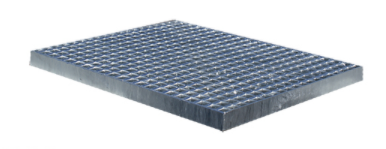
What depth and width did you use since there is lots of variations for that in 42U height.It's a normal 42U server rack. The cheapest I could find locally (the thing weights 110kg/240lbs). I believe it was around 400€ (a low price for a 42U, I believe)
Rui Ponte
New Member
- Joined
- Nov 25, 2019
- Messages
- 73
- Internal width: 19 "What depth and width did you use since there is lots of variations for that in 42U height.
- Internal height: 42 U
- Internal depth: 660 mm
- External width: 800 mm
- External height: 2072 mm
- External depth: 800 mm
This one: https://www.castroelectronica.pt/pr...-de-pe-19-42u-800mm-com-porta-vidro--proftc-1
At the time it was cheaper.
Rui Ponte
New Member
- Joined
- Nov 25, 2019
- Messages
- 73
AC breakers, on the wall (pic of the work in progress):Sorry but had another question. Where do you have all your DC and AC breakers mounted for it? Are they also all inclosed inside the server rack or are there any mounted outside of it?
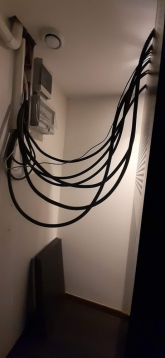
All other stuff (DC busbar, shunt, Batrium, Venux GX and router), on the back of the inverter:
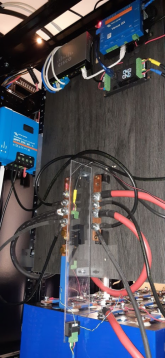
DC Breaker on the left side of the battery:
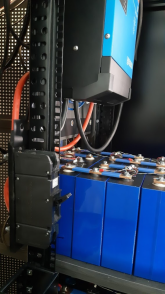
A better pic of the new battery shelves:
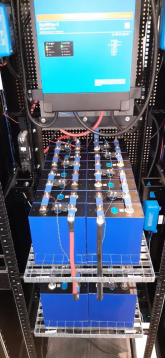
Great set up!
I actually found your set up looking on Google for 16s2p configuration ideas with split level stacking. I intend to copy basically everything about what you've done. How exactly did you connect the 4/0 busbars to the terminals in the middle of the series run?
Thanks
I actually found your set up looking on Google for 16s2p configuration ideas with split level stacking. I intend to copy basically everything about what you've done. How exactly did you connect the 4/0 busbars to the terminals in the middle of the series run?
Thanks
Frank in Thailand
making mistakes so you don't have to...
Hello Sun, and welcome to the forum.Sorry if this is an elementary question but do you seasonally adjust panel angle and if so how significant is it to your total energy production?
you're hijacking this thread. = posting your own question, not related to the thread topic.
Easy mistake to make, please do make your own "thread".
to give you a short answer: it might be significant, it might be almost none, depending on your location.
For Thailand, it doesn't matter much.
Norway, that's a whole different ballpark, including daylight tracking systems..
If you like a more extensive answer, please make your own thread.
Thank you!
I apologize for asking an inappropriate question. I assumed that the solar panels in the pictures were part of the “Flux Capacitor” system and didn’t understand how peak output on such an efficiently constructed battery array could be achieved in Northern MN with solar panels mounted almost horizontally. I too want to complement the OP on such a well designed and constructed set up!
Last edited:
Frank in Thailand
making mistakes so you don't have to...
Lately with the price drop of solar panels it's often cheaper to add more panels then to install a system that can change the angle.
I was also surprised about the angle, normal for Thailand, but I don't think OP live close to the equator
I was also surprised about the angle, normal for Thailand, but I don't think OP live close to the equator
Frank in Thailand
making mistakes so you don't have to...
My excuses for seeing this question as hijacking.Sorry if this is an elementary question but do you seasonally adjust panel angle and if so how significant is it to your total energy production?
I read it too literally, like elementary in general, and not intended for this post.
It really is, and I share your curiosity about the panel orientation.
@Rui Ponte , can you help us understand your angle setup?
Rui Ponte
New Member
- Joined
- Nov 25, 2019
- Messages
- 73
Hi! Sorry for the late reply @fhorst and @Sun
The panels are angled at around 10º, and not facing the optimal azimuth. This way, I'm loosing around 13% production of the optimal production (according to https://re.jrc.ec.europa.eu/pvg_tools/en/#PVP).
HOWEVER, due to this planned inefficiency, I was able to fit 140% more PV panels (24 vs. the 10 that would fit in the 35º slope | 0º azimuth configuration).
Because PV panels are now relativity cheap, and I needed to maximize my overall PV production, I happily embraced this "inefficiency"
@sassafras here's a photo of the connection in the middle of the run. It's a custom built copper-thingy, but it's been working quite well
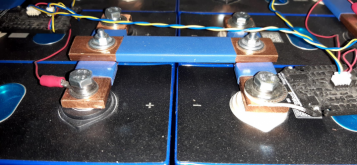
The panels are angled at around 10º, and not facing the optimal azimuth. This way, I'm loosing around 13% production of the optimal production (according to https://re.jrc.ec.europa.eu/pvg_tools/en/#PVP).
HOWEVER, due to this planned inefficiency, I was able to fit 140% more PV panels (24 vs. the 10 that would fit in the 35º slope | 0º azimuth configuration).
Because PV panels are now relativity cheap, and I needed to maximize my overall PV production, I happily embraced this "inefficiency"
@sassafras here's a photo of the connection in the middle of the run. It's a custom built copper-thingy, but it's been working quite well

Frank in Thailand
making mistakes so you don't have to...
Personally I would not call it spectacular, but the next phase of evolution.Thanks for responding about the panel angle. Not having to worry about the angle for season changes AND having significantly more panels to provide some good, usable power even on completely cloudy days is spectacular!
The whole setup is spectacular
High quality components and good Installation skills!!
Your car probably CAN drive 200km/h, but you probably never are going to use that potential power.
Driving uphill is easy.
Km/h isn't the correct information, better use torque and horsepower, you understand the similarlities.
Having offset angle means less fluctuating power production.
Yes, you miss out on the peak.
In more ideal situation you don't want to need the peak, but the overall productivity.
My peak is 14.3kwh, overall (about 9-10kw.
And that's double / triple to our daily usage.
Living off grid is also no* alternative power.
With current price of solar panels
Under $0.26 per watt (mono crystalline), it's no longer "needed" (affordable) to grasp that peak.
With a price under $75,- per LiFePO4 Kilowatt storage, that is also really affordable.
Just 2 years ago it was double....
* We do have some wind turbines and for emergency, 6.5 KW generator (gasoline/LPG)
Last edited:
Rui Ponte
New Member
- Joined
- Nov 25, 2019
- Messages
- 73



